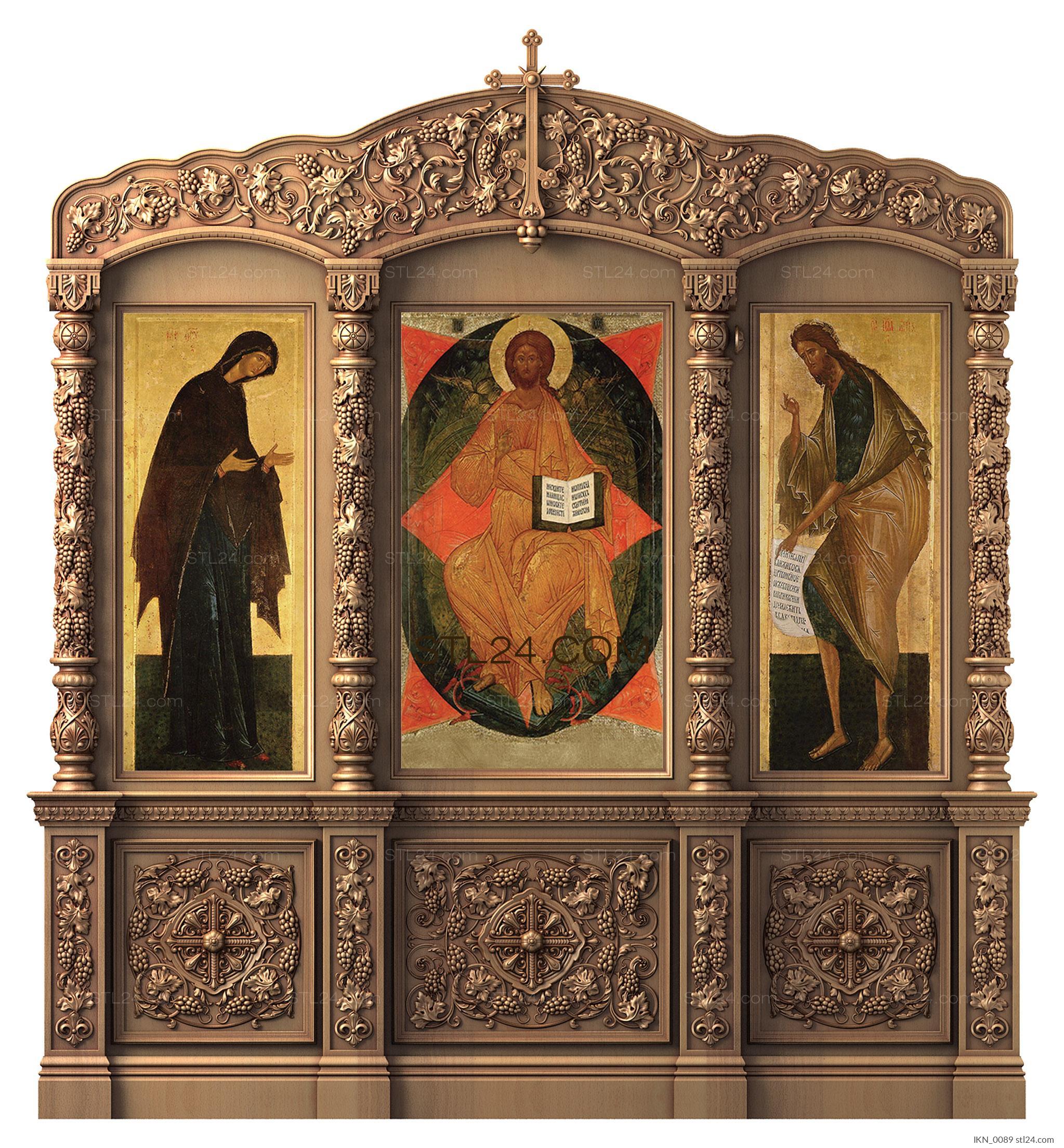
There are different styles and types of iconostases, each of which was formed in a certain era. The appearance, decor and architectural features of the iconostasis were influenced by trends in art, culture and religion. Therefore, in each century appeared its own characteristic elements.
In this article we will tell about the main styles of iconostases, created in different times, the distinctive features, features of each style. And we will show examples of 3d models of iconostases, which you can buy on our site (ready and created individually according to your specifications). With the help of stl models on CNC machines you can make iconostases of any complexity.
Old Russian iconostases:
It is no longer possible to recognize the exact appearance of the first Russian iconostases. Too much time has passed. The Church was constantly subjected to persecutions and reforms (for example, in some period of Russian Orthodoxy, all the carved icons prevalent earlier in Russia were destroyed). In general, our country had to face a lot of wars, fires, internecine strife. Therefore, up to our days the very first iconostases simply did not survive.
It is assumed that in Ancient Rus iconostases represented an ordinary altar barrier, most often one-tiered. In the 9th century, when Russia adopted Christianity, many customs of Byzantium were borrowed here. In those times a one-tier partition decorated with icons was the most common solution for the separation of the altar part of the temple.
The first tiered iconostases began to appear in the 14th century. This is how the classical Russian iconostasis was formed.
Classical Russian iconostases:
This definition refers to the iconostases that existed in Russia for the longest period, in the 14th-17th centuries.
First came the second row of iconostasis, then the third, fourth, and fifth.
The classical Russian iconostasis is 3-5 rows with icons. Each has its own meaning. Each is arranged in a certain order.
- The first row is local. Here are icons of local significance. In the center is the Royal Gate.
- The second row is the deesis row. Here is the icon of the Savior and the Mother of God praying to him, the Apostles and other saints closest to Jesus.
- The third row is festive. It includes icons depicting the most important biblical subjects.
- The fourth and fifth are the prophetic rank (with icons of the prophets) and the forefather rank (with icons of Old Testament saints).
The iconostases were abundantly decorated with carvings, especially the Royal Gates.
But more importance was given to decoration in the following periods.
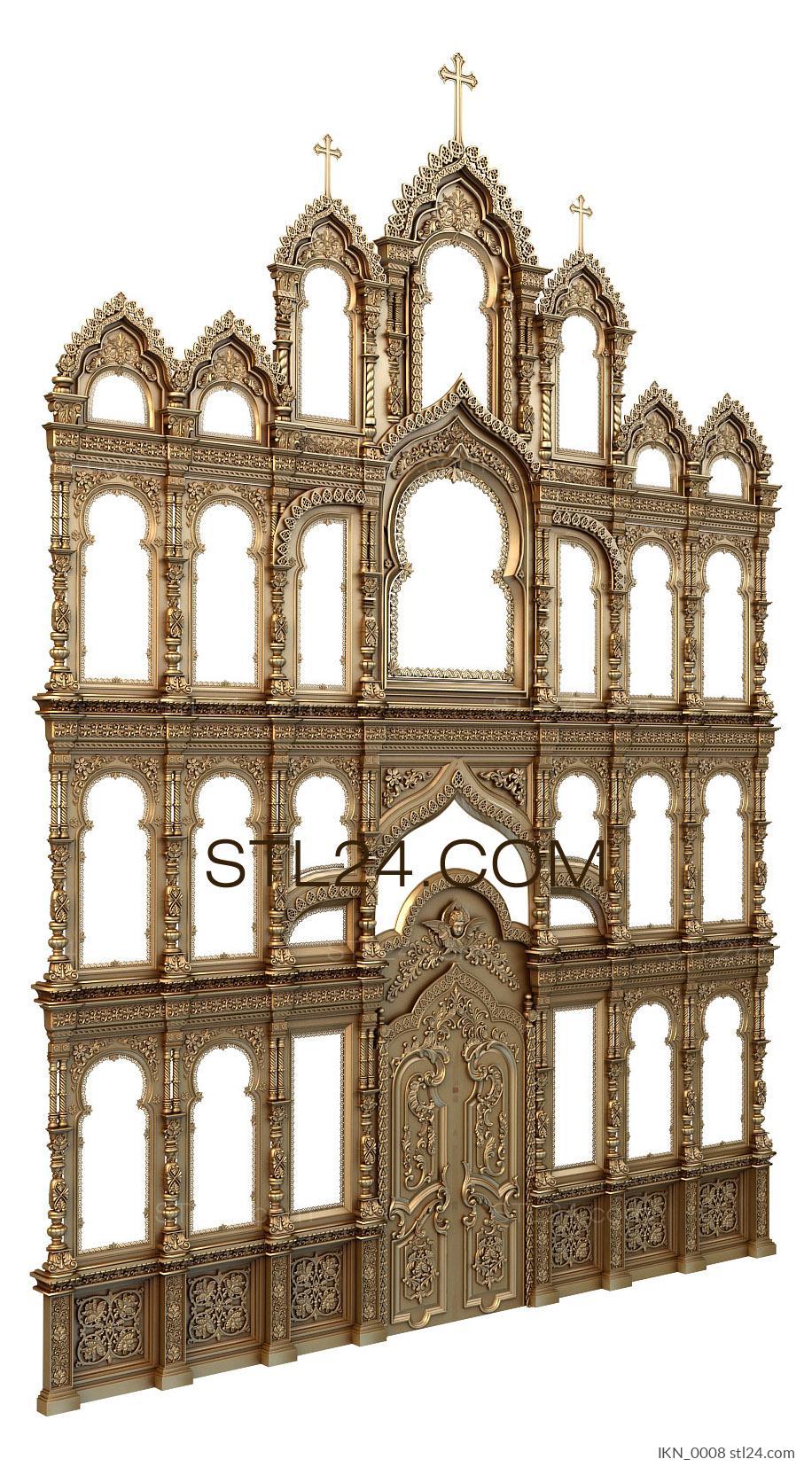
Iconostases of the Naryshkin period:
In the 17th century, iconostases somewhat different from the classical ones appeared. They are called "Naryshkin's." This is due to the fact that it was the Naryshkin family that became the first customer of numerous churches and temples made in a new style, the trends of which came from Europe. Iconostases were created in the same style.
Iconostases of this period included a large number of openwork carved elements in the Baroque style, with volumetric decoration, with vines carved from wood, with other vegetal ornamentation. At the same time, columns with capitals, used in the decoration of iconostases, became fashionable. The icons themselves could have not only a strict square shape, but also any other shape - round, oval.
At the same time the highest iconostases with the 6th and 7th rows appeared.
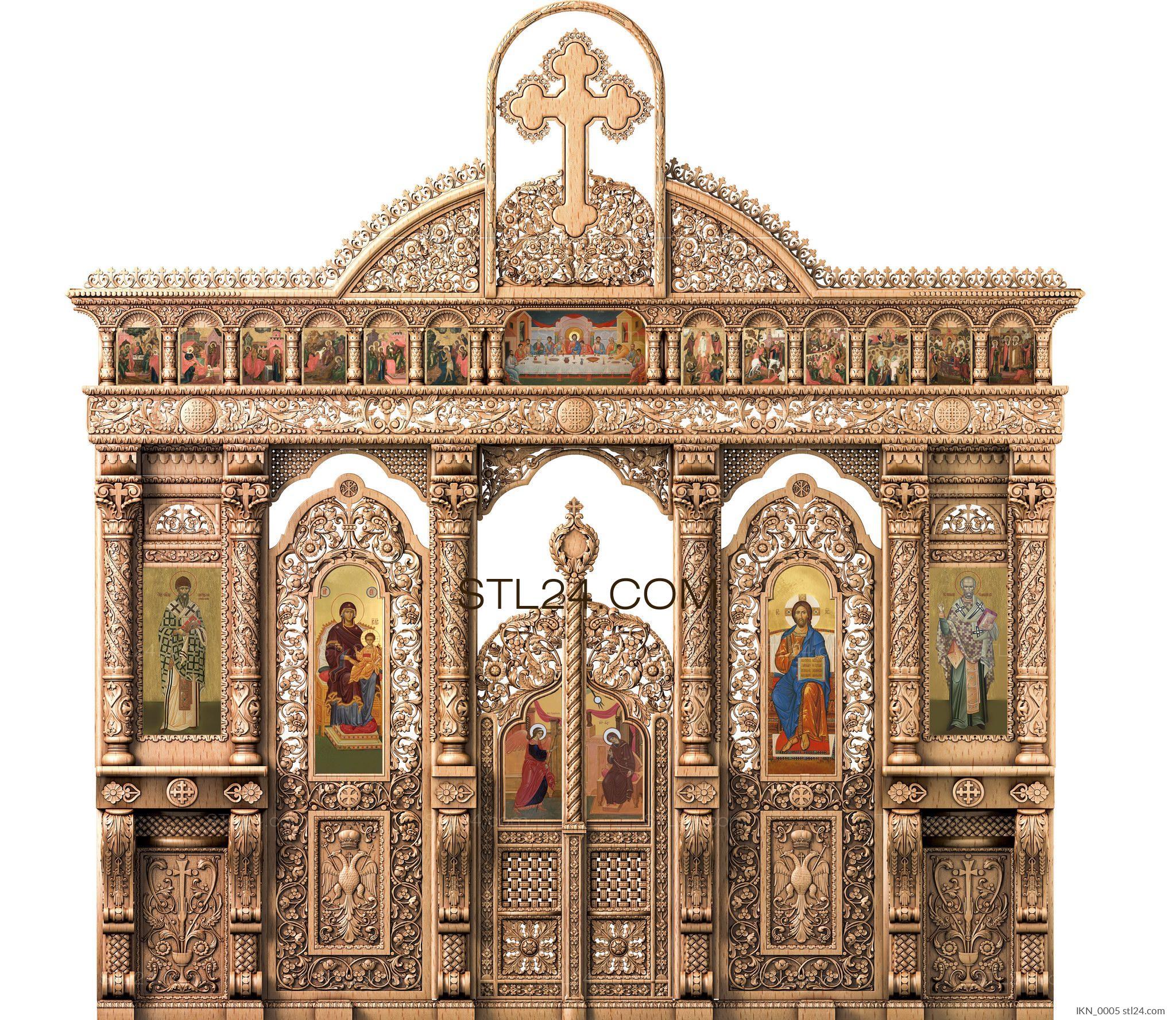
Iconostases of the Baroque era:
In the 18th century, iconostases of the Russian Baroque era appeared. They were characterized not only by lavish decor, but also by unusual shapes. For example, they could resemble an arch.
During this period, the strict arrangement of rows of icons of this or that rank was no longer observed. Icons were arranged in a random order, more in accordance with the architect's idea than with the church canons and the Orthodox hierarchy.
Sculptures also appeared in the decoration of iconostases.
The strong influence of the West is very noticeable here. That is not surprising in the era of Peter's reforms.
Iconostases of this period surprise with their beauty of volumetric carved decor and splendor, abundance of gilding.
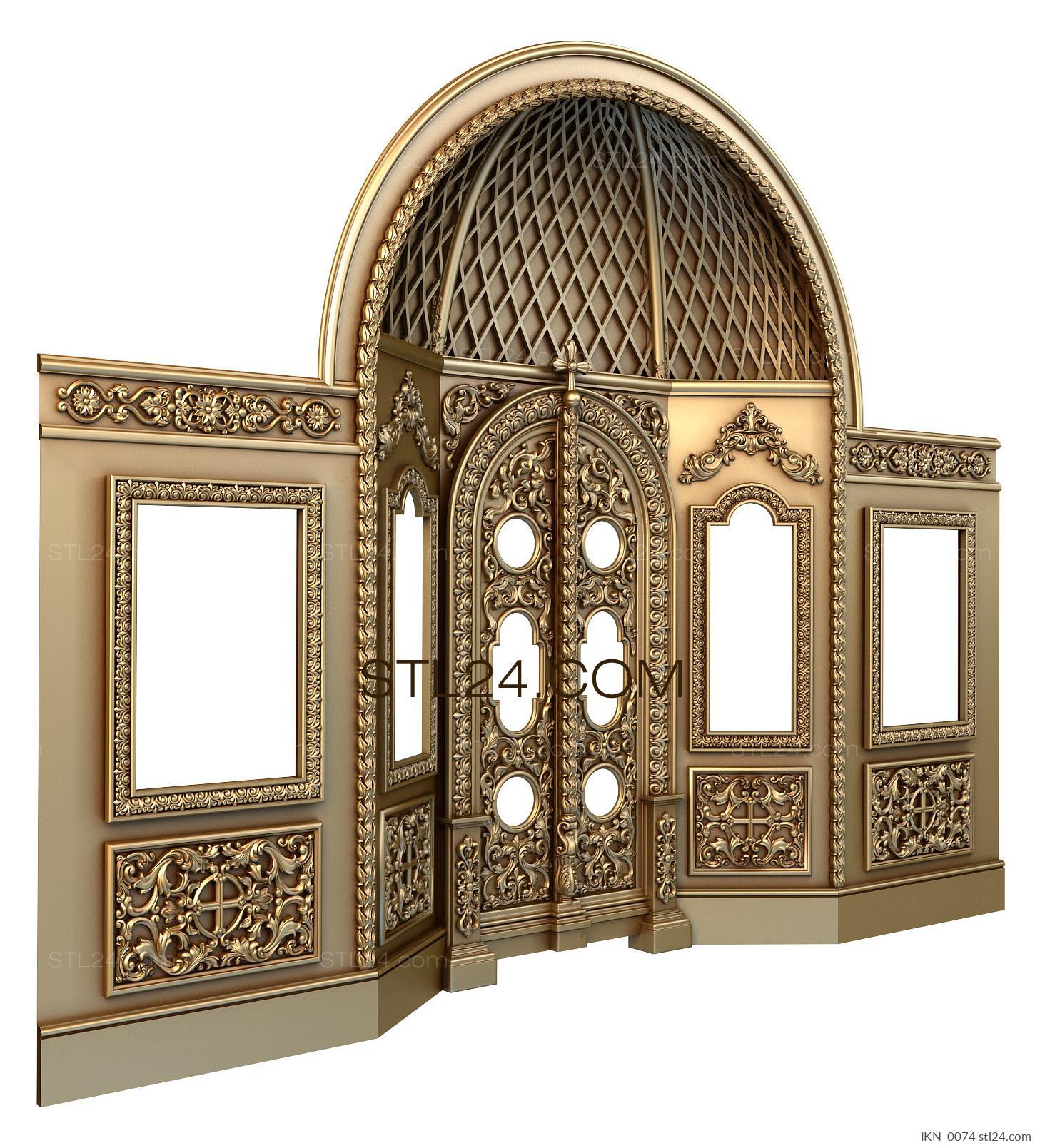
Classicism, eclecticism:
Iconostases similar to the Baroque style, gradually by the end of the 18th century changed the design, went more into classicism, but retained the features of the previous era (new forms, minimal number of icons, large size and height).
In the 19th century, they returned to the classical Russian iconostasis of 3-5 rows, leaving a few elements from the Baroque (columns, carvings). Such an iconostasis is called eclectic. It combines different styles.
In the 20th century, iconostases practically did not appear, on the contrary, in this period of time many churches, temples and iconostases were destroyed.
At the end of the 20th, in the 21st century began to restore churches and temples.
In this case, their style and form today can be any. These are five-tier iconostases in the style of the 15th-16th century, and iconostases in the style of the Naryshkin period, and iconostases in the Baroque style, and a large number of eclectic iconostases, combining features of different style directions.
The Church does not limit modern iconostases to strict frames, but tries to adhere to the traditions of the classical Russian iconostasis with local, deesis, festive and other rows. Although he sometimes allows changing their order, alternation of icons, etc.
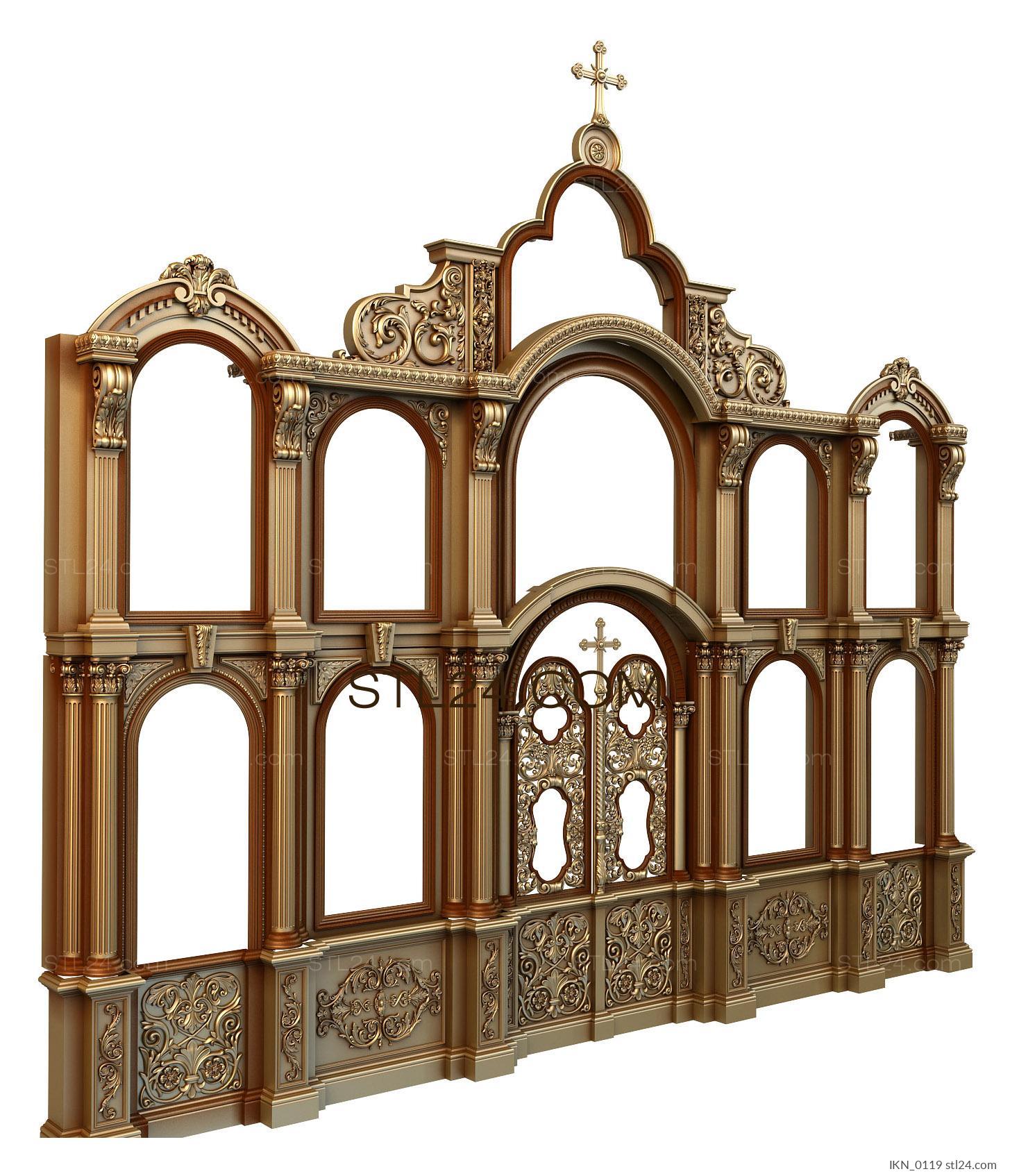
Manufacturing of iconostases:
Iconostases are made nowadays most often with the help of CNC machines. They help to realize on the material carved decor of any complexity.
Volumetric bunches of grapes. Twisted columns. The machine with jewelry precision carves on the material beautiful decorative elements in the church style and operates almost in autonomous mode. All that is needed for the work of the device - only the control program, which is set with the help of 3d model of the future product.
On our site you can buy ready-made 3D models of iconostases or order modeling according to your sketch. We will prepare models in any style.
We are waiting for your requests!
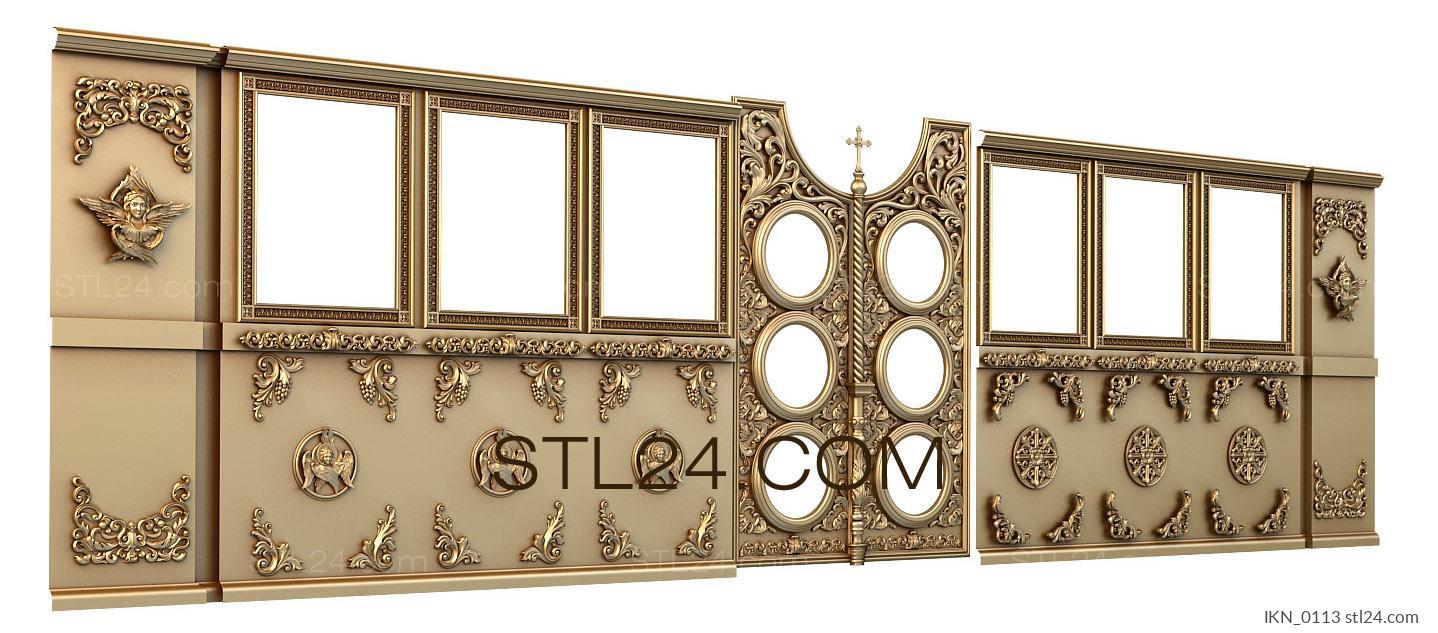 l
l
You may be interested in other publications:
Icons of Jesus Christ. Types, features. Models in stl format.
History of carved icons: when they appeared, when they were popular. Models.
Iconostases. Types. Features. 3D models for CNC machines.











